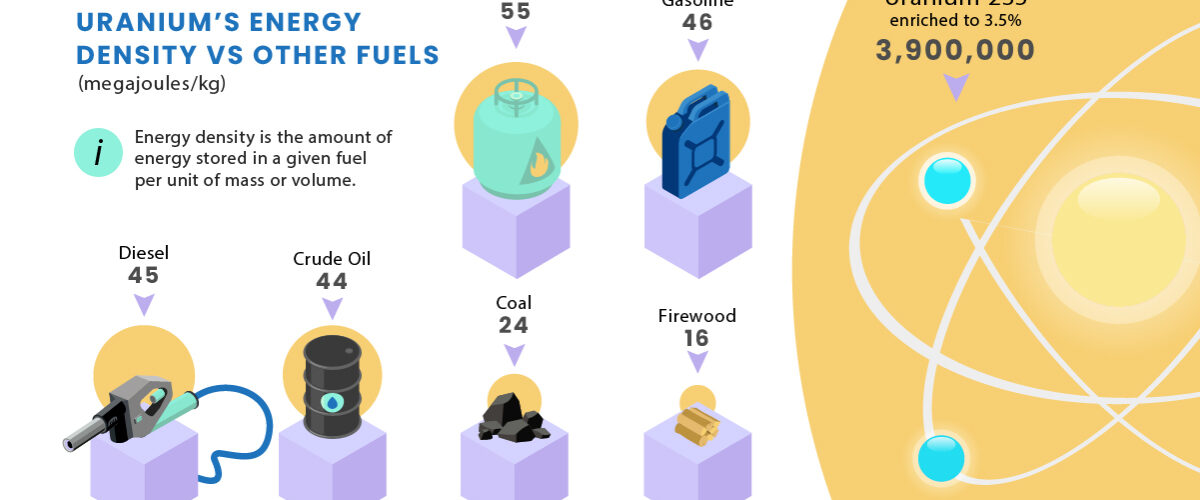Uranium: The Fuel for a Utopian Energy Economy
Uranium is the primary fuel for nuclear energy, powering more than 400 reactors that make up 10% of the world’s annual electricity generation.
With countries turning back to nuclear power as a clean energy resource, uranium has become a strategically important metal for the future.
This infographic sponsored by CanAlaska Uranium explores how uranium’s unique properties allow nuclear power to be clean and efficient, and highlights the outlook for its future. This is part 3 of 4 in the Road to Energy Utopia series.
Why Uranium is Unique
Nuclear power ultimately stems from the radioactivity of uranium atoms, which yield great amounts of energy when split by the process of fission.
Besides the radioactive nature of uranium, its energy density—the amount of energy it contains per unit of mass—is one of its exceptional properties, making it significantly more powerful than other energy fuels.
The table below compares the energy density of uranium to other fuels, expressed in megajoules of energy contained per kilogram of fuel:
| Fuel | Type | Energy Density (MJ/kg) |
|---|---|---|
| Firewood | Biomass | 16 |
| Coal | Fossil fuel | 24 |
| Crude Oil | Fossil fuel | 44 |
| Diesel | Fossil fuel | 45 |
| Gasoline | Fossil fuel | 46 |
| Liquefied Natural Gas | Fossil fuel | 55 |
| Uranium-235 (enriched to 3.5%) | Nuclear fuel | 3,900,000 |
Enriched uranium-235, the fuel used by commercial nuclear reactors, contains 3.9 million megajoules of energy per kilogram of weight, which is magnitudes larger than the energy density of traditional fossil fuels.
For this reason, a relatively small quantity of nuclear fuel can produce significant amounts of energy through fission, translating into various advantages for nuclear power:
- High Energy Return on Investment (EROI)
Nuclear power has the highest EROI of any energy source, returning 75 units of energy for every unit of energy spent in construction and operation.
- Low Land Footprint
Nuclear power plants have the smallest land footprint per unit of electricity at 0.3m2 per megawatt-hour. - Minimal Waste
Nuclear reactors produce little waste or spent fuel, and only a small portion of that is highly radioactive. Spent fuel can also be recycled.
Powering a Clean Energy Future with Uranium
The outlook for uranium has turned brighter with countries again embracing nuclear energy.
In 2021, global uranium requirements from reactors totaled 62,496 tonnes. By 2040, that figure could rise from 79,400 tonnes in the lower case to 156,500 tonnes in the upper case according to the World Nuclear Association, depending on how the conditions and policies for nuclear power shape up.
In 2021, mines provided about 77% of the uranium required for reactors, with 23% coming from secondary sources like stockpiles held by utilities and governments. Although maintaining these stockpiles is important for energy security, a sustainable mine supply of uranium will always be key to meeting rising reactor requirements.
In part 4 of the Road to Energy Utopia series, we explore how the metals copper and nickel are essential to the energy transition.

Learn more about CanAlaska, the leading exploration company in the Athabasca region.
[ad_2]
Source link



